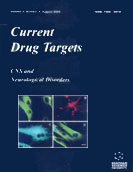Abstract
Several types of voltage- or ligand-activated calcium channels contribute to the excitability of neuronal cells. Low-voltage-activated (LVA), T-type calcium channels are characterised by relatively negative threshold of activation and therefore they can generate low-threshold spikes, which are essential for burst firing. At least three different proteins form T-type calcium current in neurons: Cav3.1, Cav3.2 and Cav3.3. Expression of these proteins in various brain regions is complementary. Individual channel types could be distinguished by different sensitivity towards inorganic cations. This inhibition can contribute to the toxicity of some heavy metals. Selective inhibition of T-type calcium channels by organic blockers may have clinical importance in some forms of epilepsy. Mibefradil inhibits the expressed Cav3.1, Cav3.2 and Cav3.3 channels in nanomolar concentrations with Cav3.3 channel having lowest affinity. The sensitivity of the expressed Cav3.1 channel to the antiepileptic drugs, valproate and ethosuximide, is low. Cav3.1 channel is moderately sensitive to phenytoin. The Cav3.2 channel is sensitive to ethosuximide, amlodipine and amiloride. All three LVA calcium channels are moderately sensitive to active metabolites of methosuximide, i.e. α-methyl-α- phenylsuccinimide. Several neuroleptics inhibit all three LVA channels in clinically relevant concentrations. All three channels are also inhibited by the endogenous cannabinoid anandamide. A high affinity peptide blocker for these Ca channels is the scorpion toxin kurtoxin which inhibits the Cav3.1 and Cav3.2, but not the Cav3.3 channel in nanomolar concentrations. Nitrous oxide selectively inhibits the Cav3.2, but not the Cav3.1 channel. The Cav3.2, but not the Cav3.1 channel is potentiated by stimulation of Ca2+ / CaM-dependent protein kinase.
Keywords: t-type calcium channel, neuronal excitability, epilepsy, antiepileptics
 3
3

















